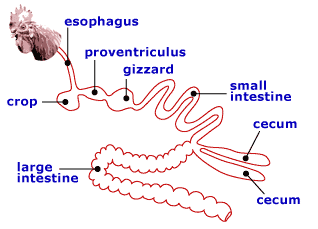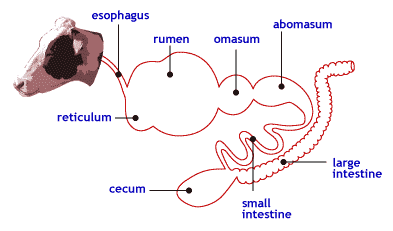Previous Page | Right click this page to print.
Classifications of Gastrointestinal Tracts
Audio transcript; narrated by Annette Buyserie, Oregon State University
Gastrointestinal tracts of domestic species are classified based upon digestive anatomy and physiology and type of diet consumed and utilized.
The two classifications based on digestive physiology and anatomy are simple nonruminants or monogastrics and ruminants. Nonruminants have a simple one-chambered stomach. Ruminants have a more complex four-chambered stomach that allows them to digest and utilize fiber.
The three classifications based on the primary type of diet consumed and utilized are omnivores, herbivores, and carnivores. Omnivores consume both plant and animal tissue; herbivores consume primarily plant tissue; and carnivores consume primarily animal tissue.
Table 1.1 lists the classifications of various domestic species.
| Animal | Classification |
|---|---|
| Poultry | Nonruminant omnivores |
| Swine | Nonruminant omnivores |
| Horses | Nonruminant herbivores |
| Dogs | Nonruminant carnivores |
| Cats | Nonruminant carnivores |
| Cattle | Ruminant herbivores |
| Sheep | Ruminant herbivores |
| Goats | Ruminant herbivores |
Poultry are classified as nonruminant omnivores. Figure 1.1 illustrates the GI tract of poultry.

The GI tract of swine is illustrated in Figure 1.2. Swine are classified as nonruminant omnivores.

Note the relatively small cecum, located post-gastric and post-absorptive. The GI tract of swine, compared to other domestic animals, most closely resembles the human GI tract.
Horses are nonruminant herbivores. Figure 1.3 illustrates the GI tract of the horse.

Note the relatively large cecum that allows the horse to consume and digest high fiber feedstuffs.
Dogs and cats are both nonruminant carnivores. The GI tracts of both species are relatively simple.
Cattle, sheep, and goats are all ruminant herbivores. Figure 1.4 illustrates the GI tract of cattle.

Previous Page | Right click this page to print.